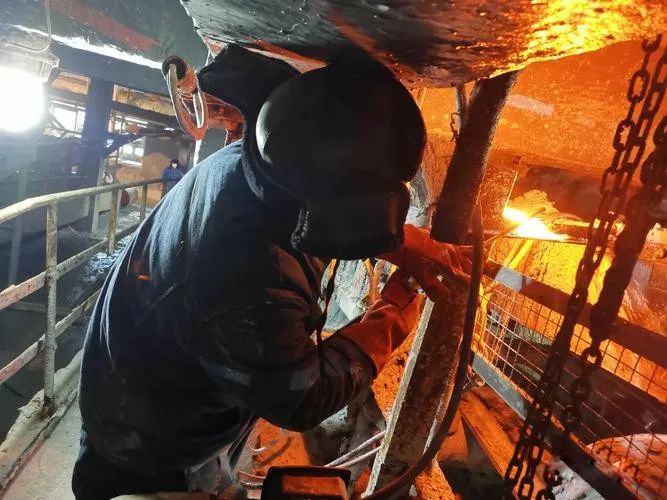Flame technology typically uses gases for different welding, cutting and heating applications. Here are some common gases used in flame technology and their introduction:
Acetylene :
Properties : Acetylene is a colorless, toxic and flammable gas that exists in a dissociated state under normal conditions.
Application : Acetylene is often used for oxyacetylene welding and cutting because its flame temperature is relatively high, which can reach about 3300°C, and is suitable for heating and welding various metals.
Oxygen :
Properties : Oxygen is a colorless, odorless, non-toxic gas, but it can support combustion.
Application : Oxygen is the oxidant in flame technology and is often used with fuel gases such as acetylene and propane to provide an oxygen supply and increase the temperature of the flame.
Propane :
Properties : Propane is a flammable gas with clean burning properties and is usually stored and transported in liquid form.
Applications : Propane is widely used for cutting, heating and welding, especially replacing acetylene in some cases because it is relatively safer and more readily available.
Methane :
Properties : Methane is a natural gas commonly found in underground sediments and sedimentary salt formations.
Applications : Methane is commonly used in industrial heating, welding and cutting. It is a clean burning gas but does not have as high a flame temperature as acetylene.
Nitrogen :
Properties : Nitrogen is a colorless, odorless gas that does not burn at room temperature and does not support combustion.
Application : Nitrogen is often used in the flame cutting process as an auxiliary gas to purge the molten metal away from the cutting area for a cleaner cut line.
Carbon Dioxide :
Properties : Carbon dioxide is a colorless, odorless gas commonly used as a welding protective gas.
Application : Carbon dioxide is often mixed with other gases (such as argon) for gas shielded welding to prevent oxygen from entering the welding area and reduce metal oxidation.
Argon :
Properties : Argon is a colorless, odorless, non-toxic inert gas.
Applications : Argon is commonly used in applications such as TIG welding, TIG cutting and TIG (Tig arc welding) to provide gas protection and flame control.
Zirconium Oxide :
Properties : Zirconia is a solid oxide commonly used as a sensitive element of oxygen sensors.
Application : Under some high temperature and high pressure conditions, zirconia sensors can be used to monitor the oxygen concentration in the flame to ensure combustion efficiency.
Gas selection in flame technology depends on the specific application and the required flame characteristics. Correct selection and operation of gases are key to safe and efficient flame processing.

Flame processing technology is a common metal processing method such as cutting, welding and heating, but it also comes with certain safety risks. The following are the key factors for maximum safety in flame processing:
Personal Protective Equipment (PPE) : Operators should wear appropriate PPE, including earplugs or earmuffs, safety glasses, fire-resistant clothing, protective gloves, and protective footwear. This equipment prevents injuries and mitigates risks during flame processing.
Ventilation : ***Work areas have adequate ventilation to eliminate harmful gases and fumes. This is essential to reduce the risk of explosion and poisoning.
Gas and Fuel Management : Store, carry and use gas and fuel in compliance with safety standards. Make sure there are no leaks in bottles and pipes, and check equipment regularly to make sure it is operating properly.
Flame equipment maintenance : Regularly inspect and maintain flame equipment to ensure that nozzles, valves and pipes are not damaged or blocked. This reduces the risk of uncontrolled flames.
Fire source control : After work, turn off the gas and fire sources in time. ***The flame does not continue to burn unattended.
Training and qualifications : Operators should be trained and qualified to understand the basic principles and safe operating procedures of flame processing.
Flame processing area : Keep the work area clean, tidy, and away from flammable materials. When flame cutting or welding, use a fire barrier or flame arrester to protect surrounding materials.
Emergency Preparedness : *** Have appropriate emergency equipment and plans in place in the event of an accident, including fire extinguishers, first aid kits and emergency evacuation procedures.
Monitoring and Inspection : Regularly monitor and inspect flame processing equipment to ensure it meets safety standards and correct problems in a timely manner.
In conclusion, flame processing technology is indispensable in many industries, but it also comes with potential dangers. By following safe operating procedures, wearing appropriate PPE, regularly maintaining equipment and training operators, you can minimize potential risks and stay safe while flame processing.